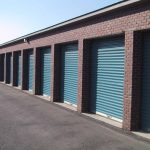Fences come in all sizes and shapes and in many materials. Before selecting the style and kind you want for your house, check with the local council regulations about what is allowed. There are regulations for size, where it can be erected, and the style. For front fences or walls, the council may not even allow one. Your builder should be aware of all these anyway. Once you know the regulations, you can select the style that best suits your house plans.
The reason for the fence
What is the fence for? Is it for keeping children and pets safely in the yard? Is it for safety around a swimming pool? Is it simply for adding style and individuality to your space? Your choice will depend entirely on the level of privacy or the look you want to achieve.
Fence Style
Privacy usually means a solid face and built at a height of around 1.8 metres. Semi-Privacy may mean a shorter fence with open lattice work at the top. Or you can opt for shadow box style which is fence panels or boards placed on either side of the support rails. Decorative usually means picket fences which can at least keep pets and kids inside the yard. The last option is to make it a natural fence, a living fence. You can do this by planting hedge or bush type plants along the boundary. Depending on the height to which they can grow, and their density, they provide privacy as well as sound absorption.
Whatever style you choose, it should complement the architecture of your house in tune with the landscaping as well. Check out details such as how boards can be cut, the fence capping options and if you will require gates.
Fencing Material
Once you have the style in mind, then you can look at the different materials available such as timber, aluminium, steel or vinyl. Traditional material is wood but remember that timber requires ongoing maintenance with painting or staining. Vinyl, on the other hand, just requires an occasional hose down. It will not rot and the styles available are similar to wood anyway. Aluminium also does not need a lot of aftercare from installation. Steel rusts over time and requires painting to keep it looking good.
Cost
The cost of a fence lies in the size, material and style you choose. The bigger the area to fence the greater the cost. Chain link, timber, aluminium and steel all have different pricing structures as well as different installation procedures.
If you are using a building designer they can apply their experience to guide you as well as knowing what is allowed for the area. If you have a clear understanding of the purpose of your fence, then you will be well on the way to selecting something that fits in perfectly with your home and yard.






